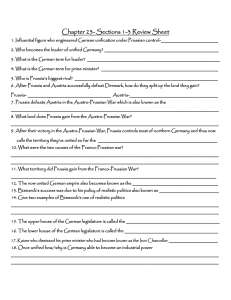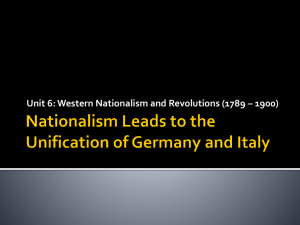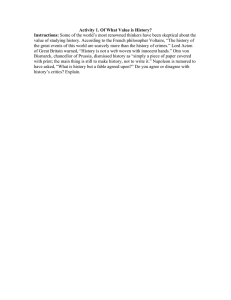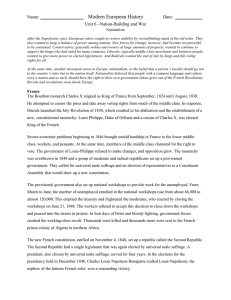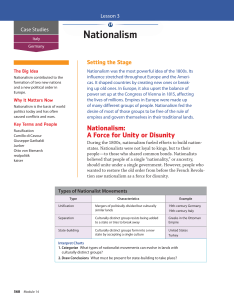Unification Movements in Europe
advertisement
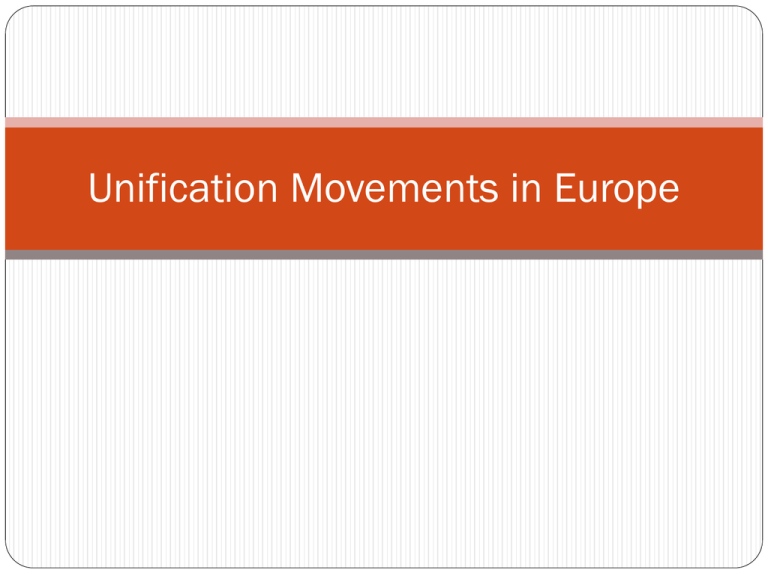
Unification Movements in Europe Nationalism Nationalism is loyalty to the nation above the king/queen Nationalists wanted their own independent government (state) and started revolutions to get their independence 3 Multinational empires (empires with many “nations”): Austro-Hungarian, Russian, Ottoman Italy: Cavour Unites Italy 1815-1848- growing feeling among Italians that they didn’t want a foreign leader anymore 1832 Giuseppe Mazzini organized the group Young Italy but driven into exile in 1848 after failed revolution Sardinia’s count Camillo di Cavour wanted to expand Sardinia’s power but managed to unite Italy Garibaldi Unites Southern Italy Giuseppe Garibaldi- 1860- Red Shirts- leader of Italian Nationalists in the South united Italy but made a deal with Cavour so that Cavour would rule 1866 Venetia added 1870 papal states added Germany: The Rise of Prussia Since 1815 39 German states in German Confederation with the Austro-Hungarian Empire and Prussia as the largest states Prussia’s advantages: ethnically unified (German), strong military, industrialized faster Otto von Bismarck and Realpolitik Bismarck – prime minister of Prussia- violated the constitution and began expanding Prussia’s borders Used realpolitik, the politics of reality 1864 forged an alliance between Prussia and Austria and went to war with Denmark 1866 Austria declared war on Prussia (7 weeks war) but lost 1867 North German Confederation Bismarck Unites Germany Franco-Prussian War 1870-1871 Bismarck begins a war against the French just so he can get the southern Germans to join him Prussians win against the French and Germany united 1871 King Wilhelm I of Prussia crowned Kaiser 1871: Great Britain and Germany most powerful states in Europe
